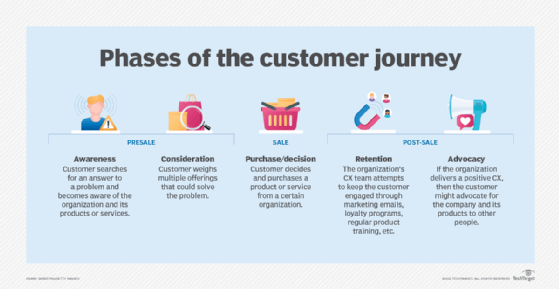
alotofpeople - stock.adobe.com
Sales enablement vs. sales operations: What's the difference?
Sales enablement and sales operations strategies have a shared goal -- to make the sales team successful and bring in more customers -- yet have different methods of reaching it.
While sales leaders may use sales enablement and sales operations interchangeably, the two strategies function differently.
A sales team can benefit from adopting sales enablement and operations strategies, but it must understand the differences before adopting one or both. If sales leaders want to improve CX and how they manage their teams, workflows and technologies, they should embrace a sales operations strategy. However, they need sales operations to embrace sales enablement, too.
What is sales enablement?
Sales enablement is a facet of sales operations that aims to improve a sales team's efficiency and productivity. This strategy can help teams improve their training and onboarding resources. It involves testing and adopting new tools, creating content and finding more coaching opportunities. Overall, sales enablement focuses on sales reps and ways to improve how they do their jobs to give them a better understanding of products they sell and customers they sell to.
With this strategy, sales leaders can more easily add AI and automation into teams' workflows. AI tools can help with lead generation, forecasting and content personalization. Because sales enablement focuses on improving sales reps' workloads, implementing an AI tool can help streamline various tasks so sales reps can focus on other areas.
What are sales operations?
The term sales operations refers to the general, high-level process that helps a sales team function. This strategy aims to find and adopt new strategies, tools and processes -- like sales enablement or strategic planning -- to improve a sales team's performance. It focuses more on how the team performs holistically rather than each rep individually.
Some key areas that a sales operations strategy focuses on include KPIs, reporting, quotas and other management tasks. This strategy ensures sales teams are productive and able to meet business goals and customers' needs.
3 differences between sales enablement and operations
Sales enablement and sales operations are not the same, although they work well together. However, they differ regarding their place in the customer journey, their main focuses and the data they use to aid sales teams.
1. Location in the customer journey
Sales enablement focuses more on the start of the customer journey. It ensures sales reps are prepared, knowledgeable and ready to turn leads into customers.

On the other hand, a sales operations strategy has more of a long-term focus. It looks at the entire sales cycle to ensure sales teams have the right data to convert customers and that their strategies and outreach techniques are successful.
2. Responsibilities
The responsibilities differ in sales enablement vs. sales operations strategies. Sales enablement focuses on how the team functions, while sales operations focus on the team's functions.
Sales enablement aims to improve existing processes, like onboarding, training, coaching, etc. This strategy focuses on how the sales team functions and how each sales rep can improve individually. A sales operations strategy works on hiring new people, creating and updating the overall sales strategy, managing contracts and technologies, etc. Its goal is to ensure the team performs successfully and enables the business to grow.
3. Data
Sales enablement and sales operations strategies use different types of data to improve performance and measure success. For example, sales enablement uses more employee-based data to see where individual reps need help or where they exceed expectations.
Alternatively, sales operations strategies prioritize customer data to see where the entire team could improve or where the sales strategy falls short within the customer journey.
Which is better?
Ultimately, the question isn't whether sales leaders should embrace sales enablement vs. sales operations. The two strategies go hand in hand, with a shared goal of improving the sales team and bringing more customers to the organization. An organization can't have sales enablement without sales operations.
Michaela Goss is the site editor for TechTarget's customer experience and content management sites. She joined TechTarget as a writer and editor in 2018.








